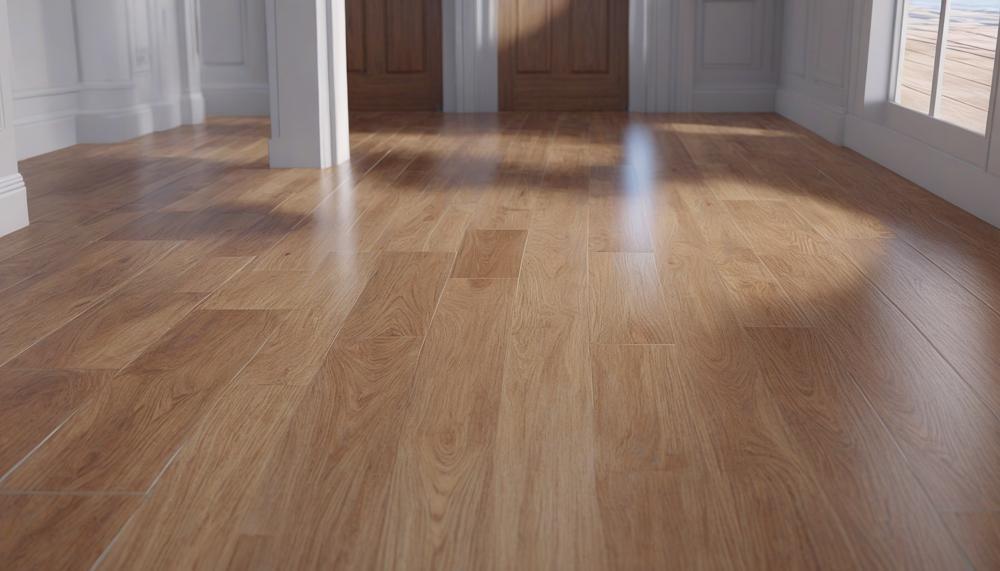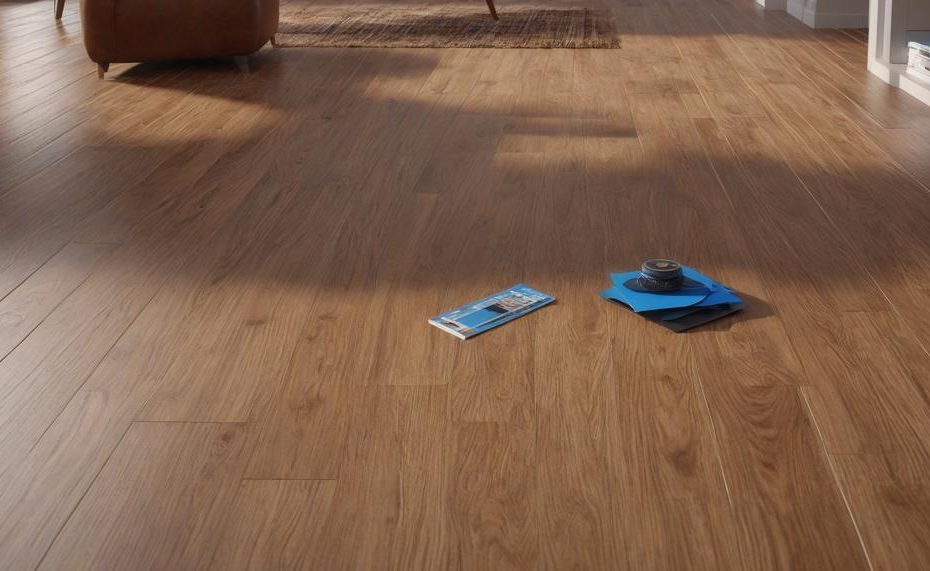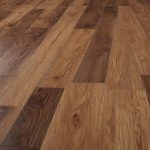Is your vinyl flooring starting to lift, creating unsightly bubbles and tripping hazards? Tackling this problem is crucial to maintaining both the beauty and safety of your space. The good news is, fixing lifted vinyl flooring doesn’t have to be complicated. Whether it’s due to poor installation, moisture, or an uneven subfloor, there are straightforward solutions to get your floors back in shape.
Using a hairdryer can often solve minor lifting by softening the adhesive and allowing you to press the vinyl back into place. However, for more significant issues, you may need to remove and reinstall the affected planks with fresh adhesive. Ensuring your subfloor is clean, dry, and level before reinstallation is essential to prevent future problems. Adding transition strips or molding can provide extra support and help avoid future lifting.
Here are the key takeaways for a quick fix and a long-term solution:
- Identify the Cause: Determine if the lifting is due to poor installation, moisture, or an uneven subfloor.
- Minor Fixes: Use a hairdryer to soften adhesive and press down minor lifting areas.
- Major Repairs: Remove and reinstall planks with new adhesive for major issues.
- Prepare the Subfloor: Ensure it is clean, dry, and level before reinstallation.
- Prevent Future Lifting: Add transition strips or molding for extra support.
By addressing the issue promptly, you can keep your vinyl flooring looking great and ensure it stays firmly in place for years to come. Ready to dive into the details? Let’s get started.
Table of Contents
Key Takeaways

When gluing down lifting vinyl flooring, follow these main steps to ensure a durable and smooth finish:
| Step | Description | Notes |
| Identify the Cause | Check for issues like poor installation, moisture, or an uneven subfloor. | This step helps prevent future lifting. |
| Prepare the Subfloor | Ensure the subfloor is clean, dry, flat, and level with no more than 3/16-inch variance within a 10-foot radius. | Clean thoroughly and repair any damage. |
| Remove Existing Flooring | Lift the affected vinyl planks carefully. | Use a hairdryer to soften adhesive for minor lifting. |
| Apply Adhesive | Spread the recommended adhesive evenly with a trowel of the appropriate notch size. | Follow the product guidelines for adhesive application. |
| Lay Vinyl Planks | Start from the furthest corner and work towards the exit, laying planks tightly and staggering end joints. | Maintain a 1/8-inch gap between planks. |
| Use a Roller | Roll over the planks with a 100 lb. roller to ensure proper adhesion and remove bubbles. | Apply pressure evenly. |
| Address Major Issues | For major lifting, remove and reinstall planks with new adhesive. | Ensure the subfloor is properly prepped before reinstallation. |
| Secure and Finish | Apply pressure to the newly laid planks and add transition strips or molding for extra support. | Weight the planks until the adhesive dries. |
For detailed guidance on subfloor preparation and adhesive application, refer to this comprehensive guide.
Preparing the Subfloor
What are the necessary steps to prepare a subfloor for gluing down vinyl flooring that is lifting?
To ensure a strong bond and a smooth finish when gluing down vinyl flooring, follow these steps:
| Step | Description | Details |
| Clean the Subfloor | Remove dust, dirt, and debris | Sweep, vacuum, and damp mop |
| Ensure Level Surface | Check for high and low spots | Sand high spots, fill low spots with leveling compound |
| Repair Damage | Fix cracks and holes | Use filler or patching compound |
| Remove Old Adhesive | Eliminate old adhesive residue | Scrape or use adhesive remover |
| Check for Moisture | Ensure subfloor is dry | Use moisture meter |
| Prime the Subfloor | Apply primer if necessary | Follow adhesive manufacturer’s recommendations |
| Acclimate Vinyl Flooring | Let flooring adjust to room conditions | 48 hours at room temperature and humidity |
| Test Adhesive Compatibility | Ensure proper adhesion | Perform a small test patch |
By adhering to these steps, you can prepare your subfloor properly, ensuring a lasting bond for your glued-down vinyl flooring.
Acclimating the Vinyl Planks
Acclimating vinyl planks is crucial to ensure a successful installation and long-term performance of your flooring. The purpose of this process is to allow the vinyl planks to adjust to the ambient temperature and humidity levels of the installation environment.
This helps prevent issues such as expansion, contraction, and warping once the planks are laid down. Proper acclimation minimizes the risk of gaps and buckling, which can occur if the vinyl flooring undergoes significant dimensional changes after installation.
Typically, the acclimation process should take around 48-72 hours. However, it’s vital to adhere to the manufacturer’s specific recommendations, as these can vary depending on the brand and type of vinyl flooring. During acclimation, the vinyl planks should be stored in the room where they will be installed, laid flat and not stacked, to ensure even exposure to the room’s conditions.
| Purpose | Details |
| Prevent Expansion and Contraction | Allows the vinyl planks to adjust to the room’s temperature and humidity, preventing dimensional changes post-installation. |
| Avoid Warping and Buckling | Minimizes the risk of warping and buckling by ensuring the planks are acclimated to the environment they will be installed in. |
| Ensure Proper Adhesion | Helps in maintaining the integrity of the adhesive bond by avoiding stress caused by expanding or contracting planks. |
Applying Adhesive to the Subfloor
Applying adhesive to the subfloor when gluing down vinyl flooring that is lifting requires meticulous preparation and precise execution. Here’s a step-by-step guide to ensure a secure and durable bond:
| Step | Description |
| Clean the Subfloor | Remove all dust, dirt, and debris to ensure a strong adhesive bond. |
| Spread the Adhesive | Use a trowel to evenly apply the adhesive as per manufacturer’s guidelines. |
| Place the Vinyl Planks | Align and position planks carefully, ensuring proper spacing. |
| Apply Firm Pressure | Press down firmly on planks and use a floor roller to eliminate air bubbles. |
| Cut to Fit | Use a utility knife and straight edge to fit planks around corners and edges. |
| Roll the Floor | Roll the surface with a floor roller to ensure full adhesive contact. |
| Install Transition Pieces | Add transition pieces or moldings for a polished look and edge protection. |
| Let it Set | Allow adhesive to cure as per manufacturer’s instructions before using the floor. |
Installing the First Row of Planks
When gluing down vinyl flooring, the first row is critical for a successful installation. Follow these steps for a flawless start:
Preparation of the Subfloor
Ensure the subfloor is clean, dry, and free of debris. Any dirt or unevenness can affect the adhesive bond and the evenness of the planks.
Layout Planning
Plan the layout by measuring the room’s width and dividing it by the plank width to determine if you need to cut the first row to ensure the last row will be at least half a plank wide. This prevents ending up with a narrow, difficult-to-install last row.
Cutting the First Row
Cut the first row of planks to fit along the wall, leaving a small gap (typically 6-10 mm) for expansion. Use a flooring cutter or a miter saw for precise cuts.
Applying Adhesive
Spread the adhesive evenly on the subfloor using a notched trowel, following the adhesive manufacturer’s instructions. Allow the adhesive to become tacky but not dry before placing the planks.
Laying the First Plank
Place the first plank in the corner of the room, with the cut edge against the wall. Ensure it is straight and aligned correctly, as this will set the tone for the entire installation.
Tapping into Place
Use a tapping block and a mallet to gently tap the plank into place, ensuring a snug fit without damaging the edges.
Staggering Joints
For the next rows, stagger the joints by cutting 1/3 off the second plank and 2/3 off the third plank. This staggered pattern enhances stability and aesthetics.
Checking Alignment
Regularly check the alignment and straightness of the planks as you proceed. Adjust as necessary to maintain a consistent gap along the walls and a straight edge.
Fitting Around Obstacles
Measure and cut planks to fit around any obstacles or irregularities in the room using a jigsaw. Tap these pieces into place carefully.
Securing the Rest of the Planks
To prevent lifting and ensure a sturdy vinyl flooring installation, follow these steps:
| Step | Method | Details |
| 1 | Remove Old Adhesive | Use a hairdryer to heat and soften the old adhesive, making it easier to scrape off. This ensures a clean surface for new adhesive application. |
| 2 | Prepare the Subfloor | Ensure the subfloor is dry, clean, and level. Any debris or unevenness can cause planks to lift. |
| 3 | Apply New Adhesive | Cover the entire subfloor area with high-quality vinyl flooring adhesive. Ensure even application to prevent gaps that could lead to lifting. |
| 4 | Mask Adjacent Planks | Use masking tape on the edges of the existing planks to prevent glue from seeping into the gaps. |
| 5 | Place and Press Planks | Carefully place the new planks into the adhesive, pressing firmly to secure them. Use a roller to ensure even pressure across the plank surface. |
| 6 | Replace Molding and Baseboards | Reattach molding and baseboards to cover the edges of the flooring, adding an extra layer of stability. |
| 7 | Allow to Set | Let the adhesive cure as per the manufacturer’s instructions, usually 24-48 hours, before walking on the floor. |
Finishing Touches and Maintenance Tips
Maintenance Tips for Keeping Vinyl Flooring in Good Condition:
- Regular Cleaning: Sweep or vacuum daily to remove dirt and debris. Mop weekly using a damp mop and a vinyl-safe cleaner. Avoid soaking the floor with water.
- Use Household Items: Mix a solution of one cup of apple cider vinegar with a gallon of warm water for a natural, effective cleaner. For tougher spots, a dab of baking soda can help without damaging the vinyl.
- Prevent Lasting Damage: Place mats at entryways to trap dirt and grit. Use felt pads under furniture legs to prevent scratches. Avoid using abrasive cleaners or scrubbers that can wear down the finish.
- Quick Response to Spills: Clean spills immediately to avoid staining and water damage. Vinyl is water-resistant but not waterproof.
Proper Gluing Techniques for Areas that May Be Lifting:
- Identify the Cause: Determine if the lifting is due to poor installation, moisture, or subfloor issues. Fixing the root cause is essential for a long-lasting repair.
- Use the Right Adhesive: Select a high-quality adhesive specifically designed for vinyl flooring. Avoid using general-purpose glues that may not provide a strong bond.
- Preparation is Key: Clean and dry the area thoroughly before applying adhesive. Use a hairdryer to warm the adhesive residue if needed, making it easier to remove.
Apply Adhesive Properly:
- Remove the Lifting Section: If a large area is lifting, remove the plank or tile entirely.
- Spread the Adhesive: Apply a thin, even layer of adhesive to both the subfloor and the back of the vinyl piece.
- Press Down Firmly: Press the vinyl back into place and apply even pressure. Use a roller or a heavy object to ensure a strong bond.
- Allow to Set: Let the adhesive cure for the recommended time before walking on the area.
- Reinstallation Considerations: For severe lifting, consider removing the entire section and checking the subfloor. Ensure it’s clean, dry, and level. Installing a 3/16″ underlayment can provide extra support and prevent future issues.
Conclusion
If your vinyl flooring is lifting, addressing the issue promptly is essential to maintain the aesthetic appeal and safety of your space. Here’s a concise guide to tackle this common problem effectively.
First, identify the root cause of the lifting. Common culprits include poor installation, moisture, or an uneven subfloor. Once you’ve pinpointed the issue, you can choose the appropriate fix.
For minor lifting, a hairdryer can work wonders. Gently heating the area softens the adhesive, allowing you to press the vinyl back into place. Ensure the surface is smooth and bubble-free as you press it down.
For more significant lifting, you’ll need to remove and reinstall the affected planks. Begin by lifting the planks carefully, then prepare the subfloor. It must be clean, dry, and level to prevent future lifting. Apply fresh adhesive evenly with a trowel, then lay the vinyl planks, starting from the farthest corner and working your way out. A 100 lb. roller will help ensure proper adhesion and eliminate bubbles.
Enhance the durability of your repair by adding transition strips or molding. These provide extra support and help prevent future lifting.






